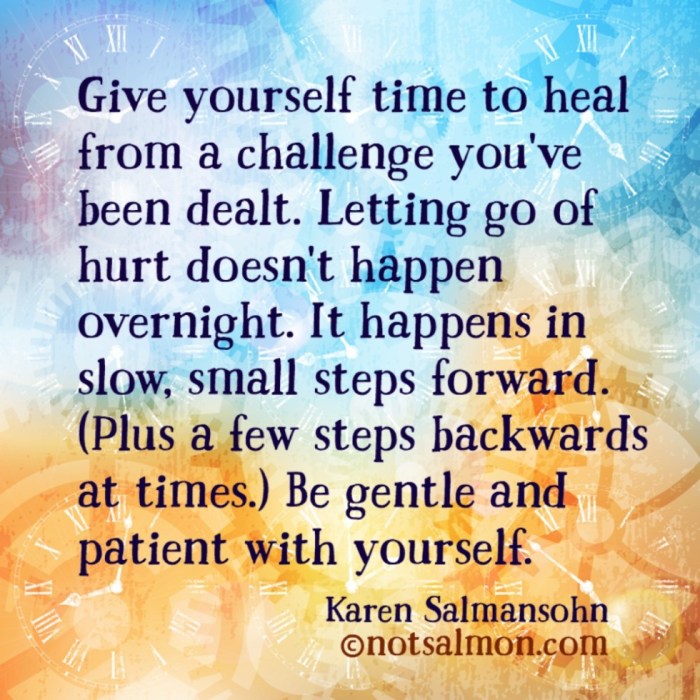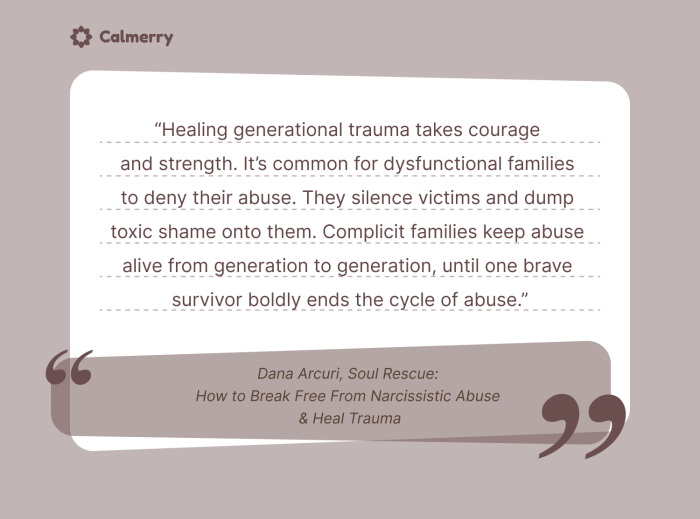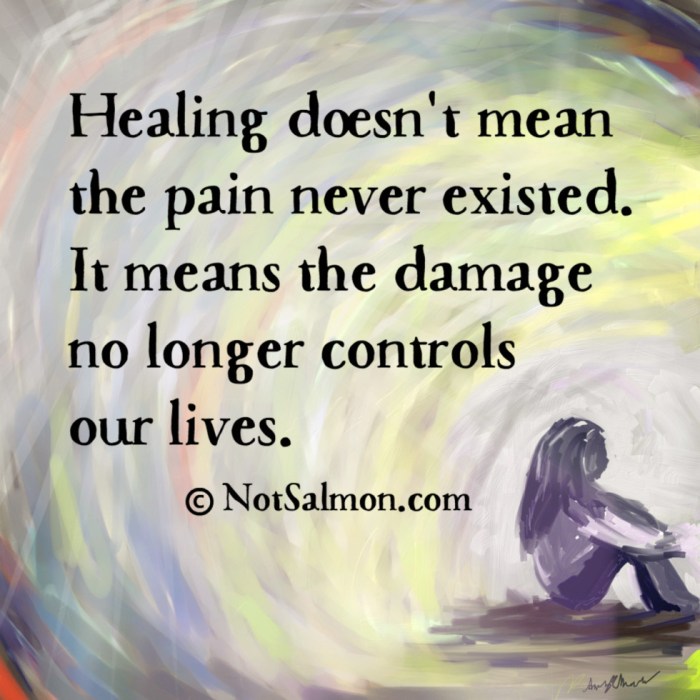The art of self healing release your trauma and manifest a new you book – “The Art of Self-Healing: Release Your Trauma and Manifest a New You” book isn’t just another self-help guide; it’s a roadmap to reclaiming your life. This transformative journey delves deep into understanding the impact of trauma, offering practical techniques to release its grip and pave the way for a brighter future. We’ll explore proven methods for identifying and processing painful experiences, fostering self-compassion, and ultimately manifesting the life you’ve always dreamed of.
Prepare to embark on a powerful path toward healing and lasting well-being.
From recognizing the subtle ways trauma manifests in daily life to mastering techniques like EMDR and mindfulness, this book provides a comprehensive framework for healing. You’ll learn to identify and challenge limiting beliefs, build resilience, and cultivate a deep sense of self-love and acceptance. This isn’t just about overcoming the past; it’s about creating a vibrant, fulfilling future—a future where you are empowered and in control of your destiny.
Understanding Trauma’s Impact
Trauma, whether stemming from a single event or prolonged exposure to adversity, significantly impacts various aspects of life. Understanding its multifaceted effects is crucial for initiating the healing process. This section will explore the diverse ways trauma manifests, its link to self-sabotaging behaviors, its physiological consequences, and common coping mechanisms – both helpful and harmful.
Trauma’s Manifestations in Daily Life
Trauma manifests in numerous ways, often subtly influencing daily routines and relationships. These can include persistent anxiety, recurring nightmares, difficulty concentrating, emotional numbness, hypervigilance (excessive alertness and caution), and flashbacks. Relationship challenges, such as trust issues and intimacy problems, are also common. Physical symptoms, such as chronic pain or digestive issues, can also be present.
Unresolved Trauma and Self-Sabotage
The connection between unresolved trauma and self-sabotaging behaviors is strong. Unprocessed trauma can lead to negative self-perception, low self-esteem, and difficulty setting boundaries. This often results in repeating harmful patterns in relationships, career choices, or self-care practices. For example, someone who experienced childhood neglect might struggle to maintain healthy relationships due to fear of abandonment, leading them to push others away before they can experience rejection.
Physiological Effects of Prolonged Stress

Prolonged stress related to trauma significantly impacts the body. The hypothalamic-pituitary-adrenal (HPA) axis, responsible for regulating stress response, can become dysregulated, leading to chronic inflammation, weakened immunity, cardiovascular problems, and gastrointestinal issues. The constant state of heightened alert also depletes energy and increases susceptibility to illness.
Common Coping Mechanisms
Individuals employ various coping mechanisms to manage trauma. Healthy mechanisms include seeking professional help, engaging in mindfulness practices, and building supportive relationships. Unhealthy coping mechanisms, however, can hinder healing and worsen symptoms. These might include substance abuse, self-harm, social isolation, and emotional suppression.
- Healthy: Therapy, exercise, spending time in nature, journaling.
- Unhealthy: Substance abuse, self-harm, emotional eating, avoidance.
The Self-Healing Journey: Initial Steps
Embarking on a self-healing journey requires courage and self-compassion. This section provides a structured approach to identifying and acknowledging trauma, accessing resources, establishing a self-care routine, and cultivating self-acceptance.
Identifying and Acknowledging Personal Trauma
The first step is acknowledging the existence of trauma. This may involve reflecting on past experiences, identifying recurring patterns in thoughts and behaviors, and recognizing the impact of past events on your present life. It’s crucial to approach this process with gentleness and self-compassion, recognizing that acknowledging trauma is a significant step towards healing.
- Reflect on significant life events and their emotional impact.
- Identify recurring patterns in your thoughts, feelings, and behaviors.
- Acknowledge the ways in which past experiences are affecting your present life.
Resources for Healing
Numerous resources are available to support your healing journey. These include therapy (individual or group), support groups (e.g., for survivors of specific traumas), peer support networks, and self-help books and workshops. Seeking professional guidance is often crucial for navigating complex trauma.
Self-Care Routine for Stress Reduction

A daily self-care routine is essential for managing stress and regulating emotions. This might include activities like yoga, meditation, spending time in nature, engaging in hobbies, or practicing relaxation techniques like deep breathing exercises. Consistency is key to experiencing the benefits of these practices.
Building Self-Compassion and Acceptance
Cultivating self-compassion involves treating yourself with the same kindness and understanding you would offer a friend struggling with similar challenges. This includes acknowledging your pain, accepting your imperfections, and practicing self-forgiveness. Regular self-reflection and positive self-talk can help foster self-acceptance.
Techniques for Trauma Release: The Art Of Self Healing Release Your Trauma And Manifest A New You Book
Several techniques can facilitate the release of trauma and promote healing. This section explores the benefits and drawbacks of different approaches, emphasizing the importance of finding methods that resonate with your individual needs and preferences. Remember to consult with a qualified professional before attempting any trauma release technique, particularly those involving revisiting traumatic memories.
Trauma Release Techniques: Benefits and Drawbacks
EMDR (Eye Movement Desensitization and Reprocessing) is a widely used therapy that involves bilateral stimulation (eye movements, taps, or sounds) while recalling traumatic memories. Somatic Experiencing focuses on releasing trauma held in the body through gentle movement and awareness of bodily sensations. While both can be effective, they require trained professionals to administer safely and effectively. Self-administered techniques should be approached cautiously.
Journaling, Mindfulness, and Meditation
Journaling provides a space to process emotions and experiences. Mindfulness involves focusing on the present moment, reducing rumination on past traumas. Meditation cultivates a sense of calm and self-awareness, helping to regulate the nervous system and reduce stress.
Guided Imagery for Trauma Processing
Guided imagery involves using visualization to access and process traumatic memories in a safe and controlled environment. A therapist or guided meditation can lead you through a process of visualizing the trauma, changing the narrative, and creating a sense of safety and empowerment.
Releasing Emotional Blockages Through Breathwork, The art of self healing release your trauma and manifest a new you book
Breathwork techniques, such as diaphragmatic breathing and alternate nostril breathing, can help release emotional blockages and reduce stress. Deep, conscious breathing can calm the nervous system and promote relaxation, making it easier to process difficult emotions.
- Find a quiet space and sit or lie down comfortably.
- Close your eyes and focus on your breath.
- Inhale deeply through your nose, filling your belly and chest with air.
- Exhale slowly through your mouth, releasing any tension you may be holding.
- Repeat this process for 5-10 minutes, noticing any shifts in your body or emotions.
Manifesting a New You: Goal Setting and Action
After releasing trauma, it’s vital to establish a vision for the future and create a plan to achieve it. This involves setting realistic goals, identifying limiting beliefs, and building resilience. This section Artikels a framework for personal transformation and growth.
Framework for Setting Realistic Goals

Start by identifying areas of your life you wish to improve. Break down larger goals into smaller, manageable steps. Set SMART goals: Specific, Measurable, Achievable, Relevant, and Time-bound. Regularly review and adjust your goals as needed.
Visual Representation of Manifesting Change
Imagine a staircase representing your journey to a new you. Each step represents a small, achievable goal. The bottom step is acknowledging your trauma, the middle steps involve healing techniques and self-care, and the top step represents your desired future self, embodying self-love, resilience, and well-being. Each step is visually distinct, reflecting the progress and achievements along the way.
The staircase is vibrant and upward-sloping, symbolizing positive momentum.
Overcoming Limiting Beliefs
Limiting beliefs are negative thoughts and assumptions that hinder personal growth. Identify these beliefs through self-reflection and journaling. Challenge their validity by questioning their origins and seeking evidence that contradicts them. Replace them with positive affirmations and empowering self-talk.
Building Resilience
Resilience is the ability to bounce back from adversity. Build resilience by developing coping mechanisms, building strong support systems, practicing self-compassion, and focusing on your strengths. Learning from past challenges and viewing setbacks as opportunities for growth are also crucial aspects of resilience.
Maintaining Long-Term Well-being
Sustaining long-term well-being requires ongoing commitment to self-care, proactive management of triggers, and nurturing healthy relationships. This section emphasizes the importance of these factors in maintaining mental and emotional health post-trauma.
Ongoing Self-Care Practices
Continue practicing self-care techniques consistently. Regular exercise, mindful activities, healthy eating, and sufficient sleep are vital for maintaining physical and mental health. Prioritize activities that bring you joy and relaxation.
Identifying and Managing Triggers
Identify potential triggers that might reawaken traumatic memories or intensify negative emotions. Develop strategies to manage these triggers, such as avoidance (if possible), relaxation techniques, or seeking support from trusted individuals.
Role of Healthy Relationships
Healthy relationships provide crucial emotional support and a sense of belonging. Nurture existing relationships and build new connections with people who offer empathy, understanding, and support. Avoid relationships that are toxic or harmful.
Self-Care Techniques Comparison
| Technique | Description | Benefits | Frequency |
|---|---|---|---|
| Mindfulness Meditation | Focusing on the present moment through breath awareness | Stress reduction, emotional regulation, increased self-awareness | Daily, 10-20 minutes |
| Yoga | Physical postures, breathing techniques, and meditation | Improved flexibility, stress reduction, increased body awareness | 3-5 times per week |
| Journaling | Writing down thoughts and feelings | Emotional processing, self-reflection, stress relief | Daily or as needed |
| Spending Time in Nature | Exposure to natural environments | Stress reduction, improved mood, increased sense of calm | Several times per week |
| Deep Breathing Exercises | Consciously controlling breath patterns | Relaxation, reduced anxiety, improved focus | As needed, throughout the day |
Integrating Spirituality and Self-Healing
For many, spirituality plays a significant role in healing and personal transformation. This section explores the connection between spirituality, nature, gratitude, positive self-talk, and affirmations in fostering well-being.
Spirituality and Personal Healing
Spirituality, whether through religious faith or personal connection to something larger than oneself, can provide meaning, purpose, and hope during difficult times. It can foster a sense of connection, belonging, and resilience. Many find solace and strength in their spiritual beliefs during the healing process.
Connecting with Nature
Spending time in nature has been shown to reduce stress, improve mood, and promote relaxation. Engaging with natural environments can provide a sense of peace and connection, fostering a sense of calm and well-being.
Cultivating Gratitude and Positive Self-Talk

Practicing gratitude involves focusing on the positive aspects of your life. This can shift your perspective, reduce negativity, and increase overall well-being. Positive self-talk involves replacing negative thoughts with supportive and encouraging statements.
Affirmations for Self-Love and Acceptance
Affirmations are positive statements repeated regularly to reinforce positive beliefs. Examples include: “I am worthy of love and acceptance,” “I am strong and resilient,” “I am capable of healing and growth.”
Conclusion
Ultimately, “The Art of Self-Healing: Release Your Trauma and Manifest a New You” offers a holistic approach to healing, empowering you to take control of your narrative and create a life filled with purpose, joy, and lasting well-being. By understanding the impact of trauma, embracing self-compassion, and implementing the practical techniques Artikeld in this book, you’ll not only overcome past hurts but also build a resilient foundation for a future brimming with possibility.
The journey may not always be easy, but the rewards—a stronger, more authentic you—are immeasurable.
FAQ Section
How long does the self-healing process typically take?
The healing journey is unique to each individual. There’s no set timeframe; progress depends on factors like the severity of trauma, the chosen healing methods, and individual commitment.
Is this book suitable for all types of trauma?
While the book offers a broad approach to healing, it’s crucial to remember that severe trauma often requires professional guidance. The book serves as a supportive resource but shouldn’t replace professional therapy.
What if I don’t believe in manifestation techniques?
The book’s manifestation techniques are presented as optional tools. The core focus is on self-healing and personal growth, and the techniques can be adapted or omitted based on individual beliefs and preferences.
Can I use this book alongside therapy?
Absolutely! The book complements professional therapy by providing practical tools and techniques to support your healing journey. It’s always advisable to discuss your self-help resources with your therapist.